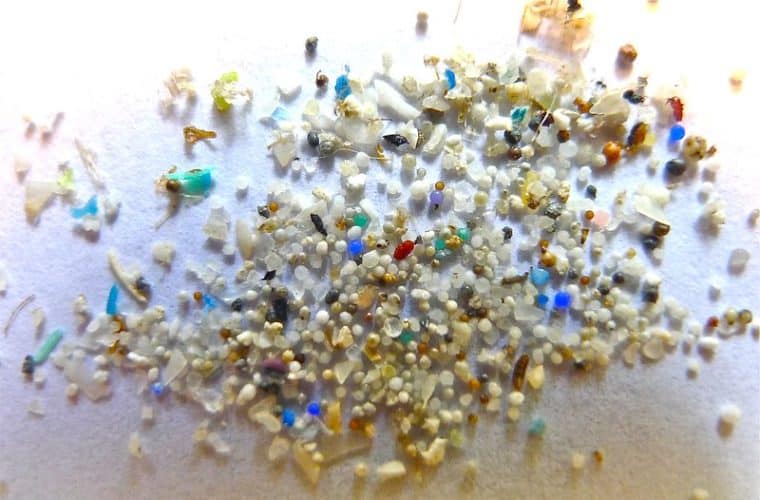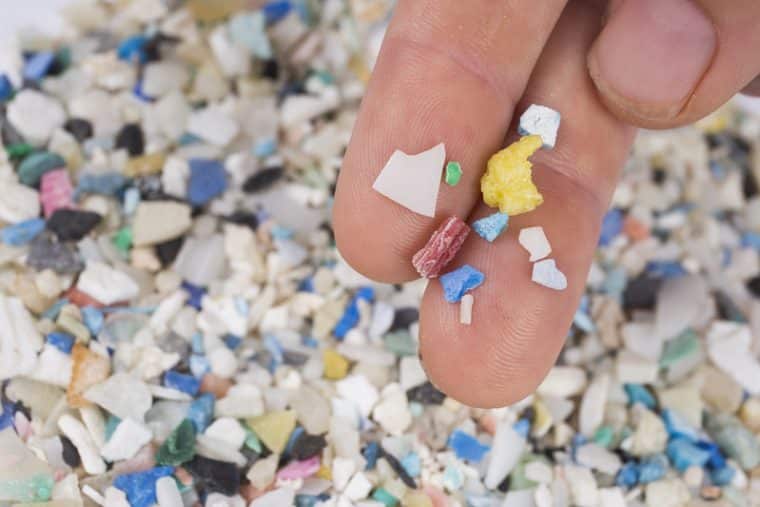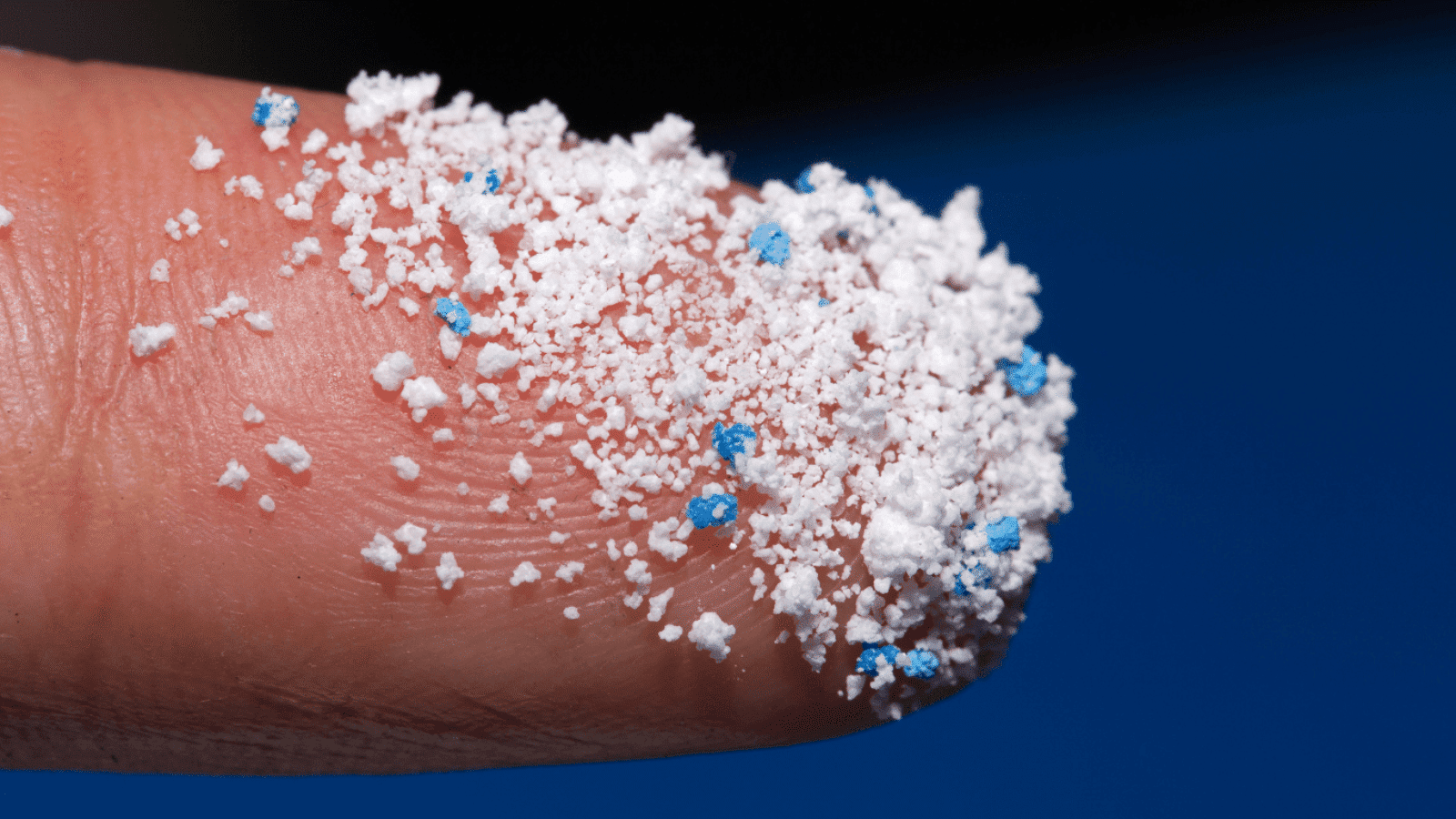The presence of microplastics in the human body has become an issue of significant concern for scientists, medical doctors, policy makers, and business owners alike.
These elements are defined as fragments smaller than 5 millimiters in diameter and recent studies have started to show that they have infiltrated critical organs and tissue including the brain, kidneys, blood vessels, testicles, and bone marrow.
Our exposure to microplastics occurs via air, food, water, and consumer products and they have become increasingly present in our environment.
As Bethanie Carney Almroth, an ecotoxicologist at the University of Gothenburg in Sweden, puts it: “There’s nowhere left untouched from the deep sea to the atmosphere to the human brain.”
These studies have started to raise alarms about the impact that the recurrent use of plastic has on our daily lives and the degree of contamination that they cause. Researchers are now calling for urgent action to address plastic pollution on a global scale.
“What we do know from studies published in the literature is that when there is local inflammation of the mucosa (lining in the nasal cavity), it can be easier for microplastics to penetrate,” commented Luís Fernando Amato-Lourenço, a postdoctoral microplastics researcher from the Free University of Berlin.
Recent Studies Find Significant Presence of Microplastics in Critical Tissue and Organs

Recent studies have revealed the extent to which microplastics have contaminated human tissue. One research from Matthew Campen, a toxicologist from the University of Mexico, found a significant level of accumulation in human brain tissue.
Campen found that brain samples contained as much as 20 times as many microplastics as other body organs. Meanwhile, in other samples collected in early 2024, microplastics accounted for 0.5% of the tissue’s total weight (that’s a lot).
Also read: It Turns Out Cleaning Up the Ocean Hurts Marine Life Too
This last study hinted at some sort of link between the presence of these contaminants and neurological and psychiatric diseases like dementia as the brains of patients who died with this condition had up to 10 times more plastic than the amount found on healthier individuals.
Meanwhile, research from JAMA Network Open also found an alarming presence of microplastics in the olfactory bulb in eight out of the fifteen cadavers examined. The diameter of the particles ranged from 5.5 to 26.4 micrometers.
“A large proportion of the microplastics present in the air are fibers that come from clothing with synthetic fabrics and everyday objects such as carpets, curtains, etc,” Amato- Lourenço further highlighted.
Health Implications of Microplastics Still Fairly Unknown
Even though the health hazards that microplastics cause are still not fully understood, these studies have started to suggest that humans are exposed to significant risks that affect their well-being.
Some of these health conditions may include oxidative stress, which can lead to cell damage and inflammation, an increased risk of cardiovascular disease, fertility issues, potential links to certain cancers, endocrine and immune system disruption, and cognitive impairment. Animal studies have linked microplastic exposure to impaired learning and memory.
Also read: How to Invest in Green Energy in 2024 – Beginner’s Guide
Moreover, microplastics can act as carriers for other harmful chemicals, potentially delivering toxic substances to various parts of the body (like the brain or bone marrow). Leonardo Trasande, a medical researcher at New York University, notes: “The micro- and nanoplastics may be effective delivery systems for toxic chemicals,”
Governments Don’t Care Much About Microplastics Yet
While much remains unknown about the direct impacts of microplastic accumulation in humans, the negative health effects of chemicals used in plastics, such as phthalates, are already well documented.
A study he co-authored found that exposure to phthalates increased the risk of cardiovascular disease and death in the United States, causing $39 billion or more in lost productivity per year.
“The chemicals can be carried to your liver and your kidney and your brain and even make their way across the placental boundary and end up in an unborn child,” commented another researcher named Sherri Mason from Penn State Behrend told CNN in March this year.
Governments have not yet created standards or regulations that protect water sources or food producers from being contaminated by microplastics. The Environmental Protection Agency is one of the few federal bodies that is actively financing the development of new methods to identify and remove these pollutants from the environment.
Meanwhile, the Food and Drug Administration (FDA) states on its website that there’s no research that currently demonstrates that micro or nanoplastics pose a risk to human health. Researchers are, however, starting to sound the alarm that actions need to be taken to address this growing threat.
Also read: 10 Best Sustainable Investments UK 2024
Sedat Gündoğdu, a microplastics researcher at Cukurova University in Turkey, emphasizes the urgency of the situation, stating that “it is now imperative to declare a global emergency” to deal with plastic pollution.
The United Nations Environment Assembly started a campaign to put an end to plastic pollution two years ago while the Biden administration has also started to support global initiatives that aim to reduce global plastic production. These efforts are considered critical by research to curve the level of contamination but this is only the first step of many.
Recommendations to Consumers to Reduce Microplastic Exposure

While more research is needed to fully understand how hazardous microplastics can be to human beings, experts recommend certain steps that individuals can take to reduce their exposure.
These include:
- Avoiding the use of plastic in food preparation, especially when microwaving.
- Opting for tap water instead of bottled water (if your tap water is free of dangerous contaminants).
- Avoiding the excessive accumulation of dust.
- Eat as few processed products as possible.
- Using stainless steel and glass containers when possible.
- Reduce the use of disposable plastics.
As research in this field progresses, it will be crucial to develop more advanced methods for detecting and quantifying microplastics in human tissues while conducting long-term studies on how they may affect human health.
The American Chemistry Council, which represents plastic and chemical manufacturers, notes that “the global plastics industry is dedicated to advancing the scientific understanding of microplastics.”
However, given the increasing amount of evidence that microplastics are piling up in human tissues and the potential health risks associated with this contamination, it’s clear that the issue demands urgent attention from researchers, policymakers, and the general public. Only through concerted efforts and increased awareness humanity can hope to address this invisible threat to its health and the environment.
